
The Maidstone typhoid epidemic (11 September 1897 - 29 January 1898), was the largest typhoid epidemic the UK had experienced.

The Maidstone typhoid epidemic (11 September 1897 - 29 January 1898), was the largest typhoid epidemic the UK had experienced.
Typhoid is an acute life-threatening bacterial illness, caused by eating contaminated food or water, or by cross contamination with infected faeces and urine. The risk of catching typhoid in nineteenth-century Britain and dying from it was a very real threat. The population of Maidstone was about 34,000 at the time, and at least 1,908 people caugh. [1] [2]

At least 132 people are known to have died, the majority dying outside the hospitals- either at home or in make shift temporary hospitals. [1] The medical officer stopped keeping a record of the deaths after early October 1897 so more people may have died. The epidemic was a ‘...turning point in public health...’; during the epidemic trials of water sterilisation using chlorination and the first immunisations with typhoid vaccine were carried out in Maidstone. [3]
The Board of Inquiry which was set up to establish the cause of the epidemic, found that it was due to contaminated water from the Farleigh Springs, one of three springs which supplied Maidstone. [1] This had been contaminated by faeces, deposited by typhoid-carrying hop-pickers camping nearby. [4] It was exacerbated by an increased level of rainfall before the epidemic, which created a high level of subsoil water which in turn contaminated the water supply. [5] The enquiry closed on 19 February 1898. [6]
Maidstone Borough Council was overwhelmed by people with typhoid requiring nursing care and had insufficient nurses to care for the typhoid epidemic victims. The Corporation of London supplied 100 nurses, including Edith Cavell, a probationer from The London Hospital to help in the epidemic. [7] [8] Nurses volunteered from around the United Kingdom, and Eva Luckes, Matron of The London Hospital sent nine probationers including Edith Cavell to work in the epidemic, as well as others from the hospital's Private Nursing Institute. [8] Prominent nurse reformer, Ethel Gordon Fenwick visited the hospitals and wrote about her visits. [9]

The nurses and others who served in the epidemic were either given, or able to purchase a Maidstone typhoid epidemic Medal.
Queen Victoria's husband Prince Albert had died from typhoid in 1861, which may explain her donation of £50 to the M.T.E. relief fund. [10]
Hospitals were opened in a number of sites. Eleven local buildings were used to accommodate up to 339 people:
| Hospital | Number of beds | Date of opening | Date of closure |
|---|---|---|---|
| Public Fever | 26 | 29 September | Open During Inquiry |
| Tents | 12 | 8 October | Open During Inquiry |
| Station Road | 80 | 25 September | Open During Inquiry |
| Wesleyan Schools | 35 | 4 October | 6 January |
| Milton Street Mission | 24 | 6 October | Open During Inquiry |
| Hedley Street School | 17 | 7 October | 8 December |
| Congregational School | 20 | 11 October | 11 December |
| Perry Street Mission | 23 | 9 October | 18 December |
| Padsole School | 37 | 19 October | 24 December |
| St Michaels School | 33 | 28 October | 20 January |
| St Luke's Mission | 32 | 26 October | 6 January |
Fig 2: Table Produced for the Local Government Board of Inquiry in to the Maidstone Typhoid Epidemic. [5]
As well as over 270 nurses members of the Army also worked, as well as volunteer cooks, laundry workers and many others. [11] [8] [12]


Typhoid fever, also known simply as typhoid, is a disease caused by Salmonella enterica serotype Typhi bacteria, also called SalmonellaTyphi. Symptoms vary from mild to severe, and usually begin six to 30 days after exposure. Often there is a gradual onset of a high fever over several days. This is commonly accompanied by weakness, abdominal pain, constipation, headaches, and mild vomiting. Some people develop a skin rash with rose colored spots. In severe cases, people may experience confusion. Without treatment, symptoms may last weeks or months. Diarrhea may be severe, but is uncommon. Other people may carry it without being affected, but are still contagious. Typhoid fever is a type of enteric fever, along with paratyphoid fever. Salmonella enterica Typhi is believed to infect and replicate only within humans.
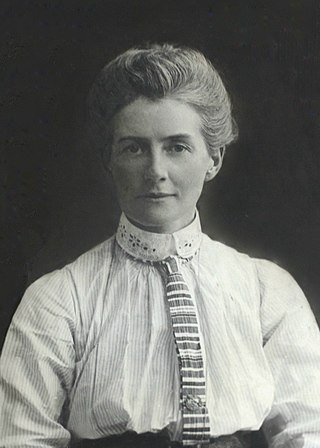
Edith Louisa Cavell was a British nurse and member of La Dame Blanche. She is celebrated for treating wounded soldiers from both sides without discrimination and for covertly helping some 200 Allied soldiers escape from German-occupied Belgium and return to active service during the First World War, which in wartime was a death penalty offence under the German military law. Cavell was arrested and court-martialed for that offence as an act of Kriegsverrat, found guilty, and sentenced to death by firing squad. Despite international pressure for mercy, the German Government ruled that Cavell knew that her acts were punishable; they thus refused to commute her sentence, and she was shot. Her execution, however, received worldwide condemnation and extensive global press coverage arranged by Wellington House.

Maidstone is the largest town in Kent, England, of which it is the county town. Maidstone is historically important and lies 32 miles (51 km) east-south-east of London. The River Medway runs through the centre of the town, linking it with Rochester and the Thames Estuary. Historically, the river carried much of the town's trade as the centre of the agricultural county of Kent, which is known as the Garden of England. There is evidence of settlement in the area dating back before the Stone Age. The town, part of the borough of Maidstone, had an approximate population of 100,000 in 2019. Since World War II, the town's economy has shifted from heavy industry towards light industry and services.
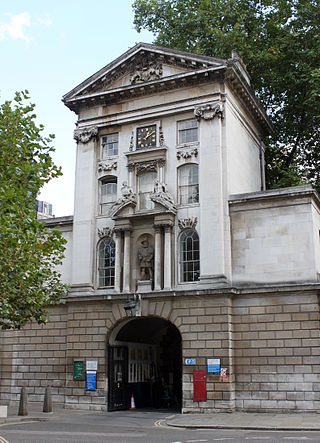
St Bartholomew's Hospital, commonly known as Barts, is a teaching hospital located in the City of London. It was founded in 1123 and is currently run by Barts Health NHS Trust.
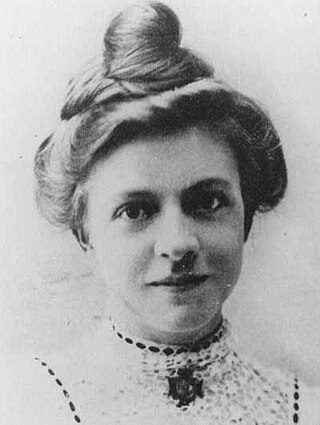
Clara Louise Maass was an American nurse who died as a result of volunteering for medical experiments to study yellow fever.

Ethel Gordon Fenwick was a British nurse who played a major role in the History of Nursing in the United Kingdom. She campaigned to procure a nationally recognised certificate for nursing, to safeguard the title "Nurse", and lobbied Parliament to pass a law to control nursing and limit it to "registered" nurses only.

Casualty 1900s, broadcast in the U.S. as London Hospital, is a British hospital drama inspired by but otherwise unrelated to BBC One drama Casualty.

Eva Charlotte Ellis Luckes was Matron of The London Hospital from 1880 to 1919.

St Leonard's Hospital is a hospital in Hoxton, London.

John Laing Leal was an American physician and water treatment expert who, in 1908, was responsible for conceiving and implementing the first disinfection of a U.S. drinking water supply using chlorine. He was one of the principal expert witnesses at two trials which examined the quality of the water supply in Jersey City, New Jersey, and which evaluated the safety and utility of chlorine for production of "pure and wholesome" drinking water. The second trial verdict approved the use of chlorine to disinfect drinking water which led to an explosion of its use in water supplies across the U.S.
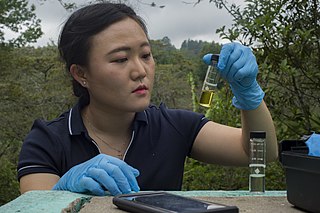
Water chlorination is the process of adding chlorine or chlorine compounds such as sodium hypochlorite to water. This method is used to kill bacteria, viruses and other microbes in water. In particular, chlorination is used to prevent the spread of waterborne diseases such as cholera, dysentery, and typhoid.

Isla Stewart was an English hospital matron of St Bartholomew's Hospital in London and a founding member of the Royal British Nurses' Association.
The history of nursing in the United Kingdom relates to the development of the profession since the 1850s. The history of nursing itself dates back to ancient history, when the sick were cared for in temples and places of worship. In the early Christian era, nursing in the United Kingdom was undertaken by certain women in the Christian Church, their services being extended to patients in their homes. These women had no real training by today's standards, but experience taught them valuable skills, especially in the use of herbs and folk drugs, and some gained fame as the physicians of their era. Remnants of the religious nature of nurses remains in Britain today, especially with the retention of the job title "Sister" for a senior female nurse.
The British College of Nurses was set up in 1926 by Ethel Bedford Fenwick in order to offer its members professional education and support of various kinds. It was to be run by nurses, for nurses, in a democratic manner. Fenwick had many supporters but the College only lasted for thirty years.
The Fever Nurses Association was established in London in 1908.

Susan Bell McGahey was the matron of the Royal Prince Alfred Hospital from 1891 to 1904. McGahey was also co-founder of the Australasian Trained Nurses' Association in 1899 and president of the International Council of Nurses from 1904 to 1909.
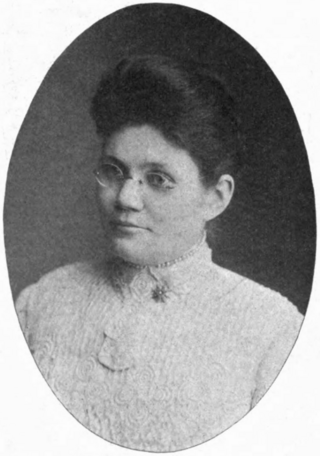
Hannah A. Kallem was a Norwegian-born American army nurse.

The David Lewis Northern Hospital was located in Great Howard Street, Liverpool. It was first established in 1834 and closed in 1978.

The Croydon typhoid outbreak of 1937, also known as the Croydon epidemic of typhoid fever, was an outbreak of typhoid fever in Croydon, Surrey, now part of London, in 1937. It resulted in 341 cases of typhoid, and it caused considerable local discontent leading to a media campaign and a public inquiry.

Annie Sophia Jane McIntosh CBE, RRC was a British nurse and nursing leader. She was a Matron of St Bartholomew's Hospital, London (1910–1927), promoted the fledgling College of Nursing Ltd, and served on several wartime committees.